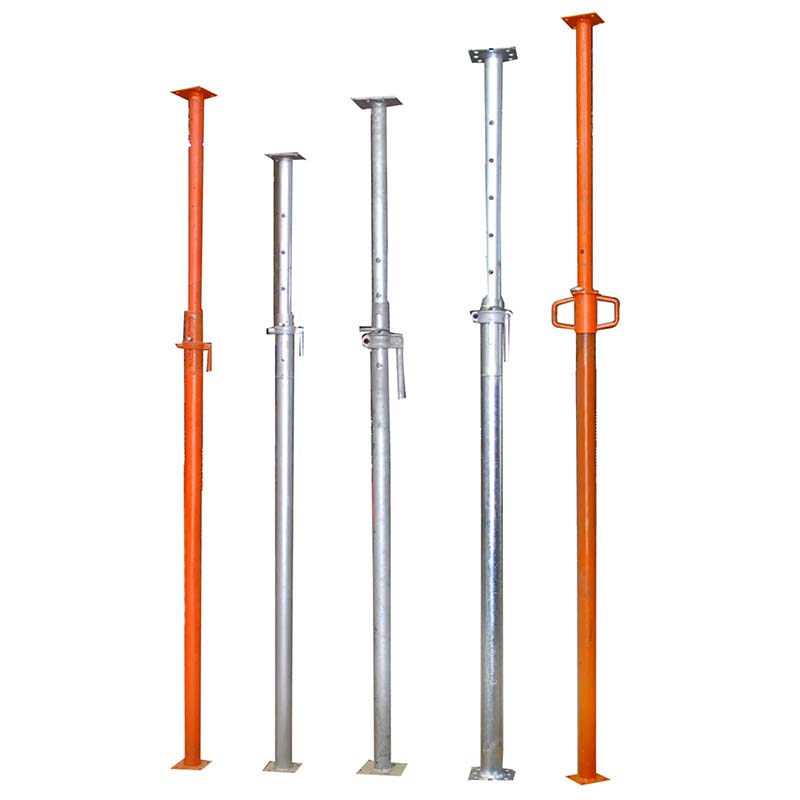Nov . 06, 2024 07:15 Back to list
China Innovative Column Formwork Solutions for Efficient Construction
Understanding China Column Formwork System An Essential Element in Modern Construction
In today's rapidly evolving construction industry, efficiency, safety, and cost-effectiveness are paramount. Among the various systems and technologies adopted to meet these demands, the column formwork system has emerged as a critical component, particularly in China, where construction projects are unprecedented in scale and complexity. This article delves into the intricacies of the China column formwork system, highlighting its features, advantages, and the role it plays in modern construction practices.
What is Column Formwork?
Column formwork refers to the temporary structure used to shape and support concrete columns until the concrete hardens and can bear its weight. It consists of various elements, including vertical and horizontal framework, sheathing, and bracing. The formwork must be robust enough to hold the weight of the wet concrete and withstand the pressure generated during the pouring process.
The Significance of Column Formwork in China
As one of the world's largest construction markets, China has been at the forefront of innovative construction methods. The rapid urbanization, coupled with the demand for high-rise buildings and infrastructure projects, necessitates the use of advanced formwork systems. The column formwork system is particularly significant due to its ability to conform to various designs and load requirements, making it suitable for both residential and commercial projects.
Features of the China Column Formwork System
1. Modularity and Flexibility One of the primary features of the column formwork system in China is its modular design. This allows for quick assembly and disassembly, facilitating efficient use across multiple projects. The system can be customized to create various shapes and sizes of columns, adapting to unique architectural designs.
2. Lightweight Materials The use of lightweight materials in formwork construction reduces the overall load on the supporting structures. This is particularly important in high-rise constructions, where every kilogram counts in terms of structural integrity and safety.
china column formwork system

3. Cost-Effectiveness The column formwork system significantly lowers labor costs and construction time. With fewer workers needed for the assembly and less time required to form the columns, project managers can achieve tighter deadlines and improved budgeting.
4. Enhanced Safety Features Modern column formwork systems are designed with safety in mind. Features such as secure locking mechanisms, anti-slip surfaces, and guardrails help protect workers during the construction process.
Advantages of Using Column Formwork Systems
The implementation of column formwork systems in Chinese construction practices brings several advantages
- Time Efficiency The speed at which formwork can be erected and stripped allows for faster project completion. This efficiency is essential in meeting the demands of a booming construction market.
- Quality Control Advanced formwork systems provide better control over the dimensions and finish of concrete columns, leading to improved structural quality. Consistent quality also reduces the likelihood of post-construction issues related to structural integrity.
- Sustainability With a focus on environmental impact, many manufacturers are developing reusable formwork systems. This practice not only reduces waste but also promotes sustainability in construction practices.
Conclusion
The column formwork system is an integral part of modern construction in China, reflecting the country's ongoing commitment to innovation and quality in building practices. As the demand for sophisticated infrastructure and residential projects continues to rise, so too will the reliance on efficient, cost-effective formwork solutions. Embracing these developments will pave the way for a more sustainable, resilient, and high-quality future in construction. As we move forward, the importance of mastering advanced construction technologies like the column formwork system cannot be overstated, ensuring that the industry meets the challenges of the 21st century head-on.
-
High-Quality U Head Jack Scaffolding – Reliable Scaffolding Jack Head Manufacturer & Factory
NewsJul.08,2025
-
High-Quality I Beam H20 Leading Timber Beam H20 Material Factory, Exporters & Manufacturers
NewsJul.08,2025
-
High-Quality Powder Coating Steel Formwork - Durable & Corrosion Resistant Solutions
NewsJul.07,2025
-
Inclined Column Formwork Supplier – Durable & Precise Solutions for Unique Structures
NewsJul.07,2025
-
High-Quality Water Stop Solutions Trusted Water Stop Company & Suppliers
NewsJul.07,2025
-
High-Quality Formwork Material Supplier Reliable Manufacturer & Factory Solutions
NewsJul.06,2025